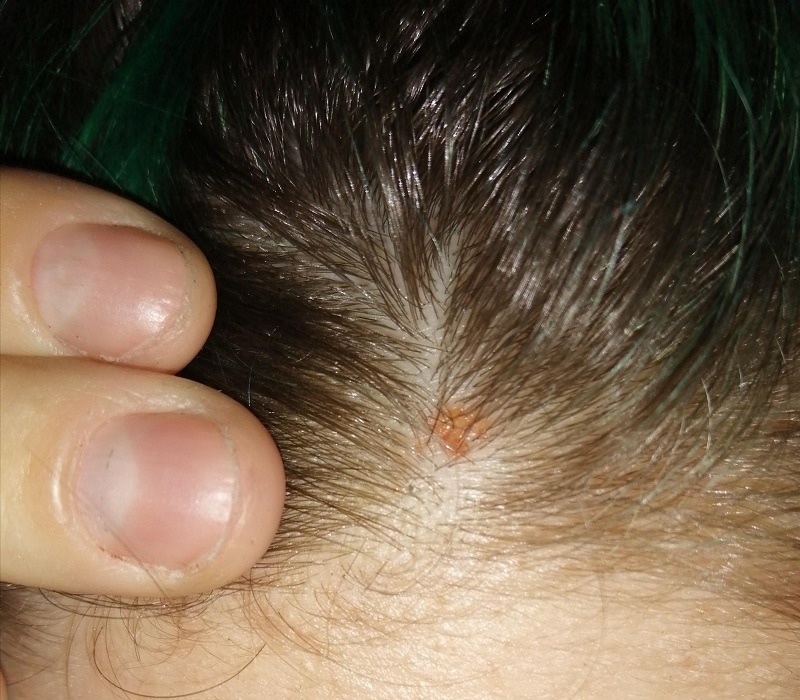Most of us have been through social embarrassment due to among these reasons at some time inside our lives – dandruff, lice, itchy scalp, etc. Did you know one or more of these scalp conditions can result in scabs?
If you’re wondering what this problem is and how serious it is usually, read our article. We’ve stated all its causes, how exactly to treat all of them and all of the risks involved. Hold scrolling.
What is a Scab?
A good scab is a little or big patch of skin that’s excessively drier compared to the skin around it. Other healthy areas on the scalp will end up being smooth to the touch, as the scabs will come to be hard and tough. Scabs could be small and far apart, or several close patches mutually forming bigger scabs.
There may be several causes for scabs on the scalp – from dandruff and lice to get hold of dermatitis and seborrheic eczema. Depending on the cause, treatment could be chosen. Most times, the scabs clear up with topical treatments or targeted medication.
Lice On The Hair
Lice could be very contagious because they can fly from one person’s hair to some other. Head lice triggers itching and if you scratch too much or for too long, it could cause scabs that gets infected. Brain lice are not carriers of any serious ailments and don’t cause serious harm. But, they need to be managed and removed entirely as it is definitely unhygienic and may trigger problems socially.
Treatment
There are lots of OTC shampoos and medications available specifically to treat head lice. Search for ingredients like pyrethrin, dimethicone, etc. After they fall off or happen to be taken out they die in just a few days; as they have nothing to feed on. Visit this website to get more insight, scabs on scalp treatment
Shingles
The same virus that causes chickenpox can cause shingles, since it remains dormant in your body should you have had chickenpox. When it gets reactivated, it triggers shingles. They often affect your skin, but make a difference the scalp also at times.
Shingles look like tiny blisters that become yellow and crusty as time passes. A rash because of shingles can be painful, and could result in headaches or facial weakness. The condition may persist for a number of months.
Treatment
Treatment for shingles should be prescribed by a good dermatologist. The protocol could include topical ointments, oral antiviral and pain-killing medicines.
Eosinophilic Folliculitis
A non-contagious condition, eosinophilic folliculitis prospects to pus-filled sores that are itchy. When they heal, they keep patches of dark skin. This problem develops when someone is usually within an advanced level of HIV. The scabs can propagate and recur aswell.
Treatment
Prescription medication, predicated on other health issues, is prescribed. They involve tablets that may control the infection and decrease the soreness, and medicated ointments and shampoos to soothe the condition topically.
Contact Dermatitis
The result of your body to chemicals such as for example those within cosmetics, hair colour, or shampoo prospects to contact dermatitis. Other elements causing it incorporate certain fabrics and jewellery, poison ivy, etc. When you scratch, it may bleed and lead to scab formation.
Treatment
Contact dermatitis may clear up alone. But if the allergic reaction can be severe, antihistamines and other relief rendering OTC treatments could be prescribed.
Seborrheic Dermatitis (Dandruff)
Dandruff or seborrheic dermatitis is probably the most prevalent skin conditions that may cause scabs in the scalp. Itching, scabs, and dry flakes of skin that fall off and stick to the wild hair happen to be symptoms. Scabs could be yellowish or white. Seborrheic dermatitis isn’t contagious.
This is a myth that poor hygiene triggers dandruff; the precise cause is normally unknown. Shampooing everyday is also no promise that you won’t have dandruff.
Treatment
There are various OTC shampoos designed for dandruff available. Some medicated lotions and ointments can be used as a supplementary treatment. When you decide on a shampoo to reduce dandruff, search for elements like salicylic acid, selenium sulfide, pyrithione zinc and tar.
There are also prescription shampoos which contain ketoconazole available for sale. But, those could cause discomfort and itching; and may also change the look and feel and texture of your hair as unwanted effects of long term use. If these symptoms persist, speak to your dermatologist.
Dandruff can be controlled; according to the severity. Normally it takes some months to some years. Occasionally, it remains a problem for life; though its intensity and overall look may recede and reappear over and over.
Acne
Generally, acne causes pimples and blocked pores over the facial skin and in areas just like the scalp where hair follicles are present. If they receive clogged due to sweat, oil, dead cells or infection, it may lead to acne and scabs on the scalp.
Treatment
Medicated shampoos and regular hair baths can reduce the existence of scabs and pimple about the scalp. If the problem can be severe, the dermatologist may prescribe anti-acne treatments and even antibiotics.
Scalp Ringworm
A fungal an infection causes the problem known as scalp ringworm. When it influences the scalp, it prospects to a rash that’s incredibly itchy and red in colour.
Treatment
Medical treatment is essential in this article as the problem needs prescription drugs. The dermatologist will prescribe treatment based on the diagnosis.
